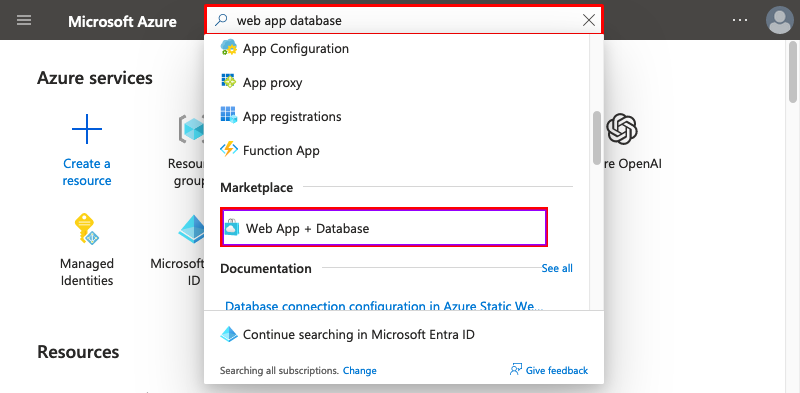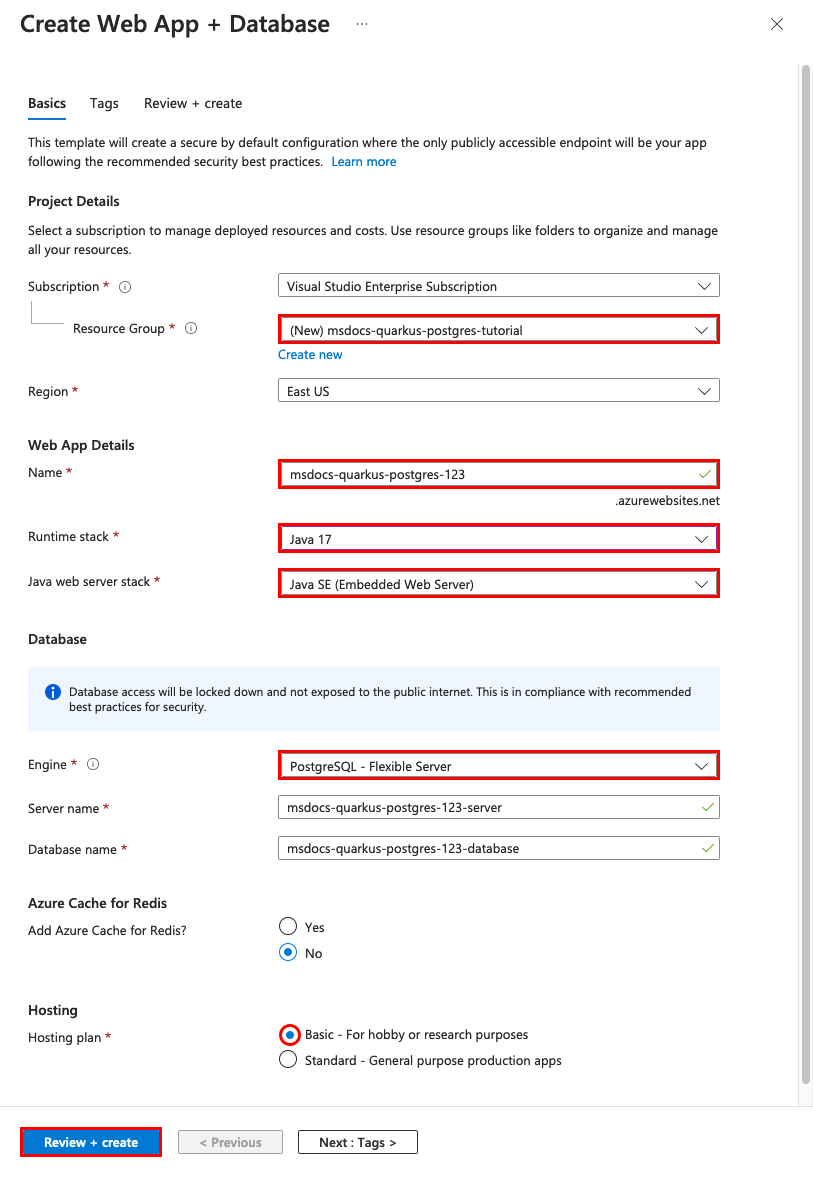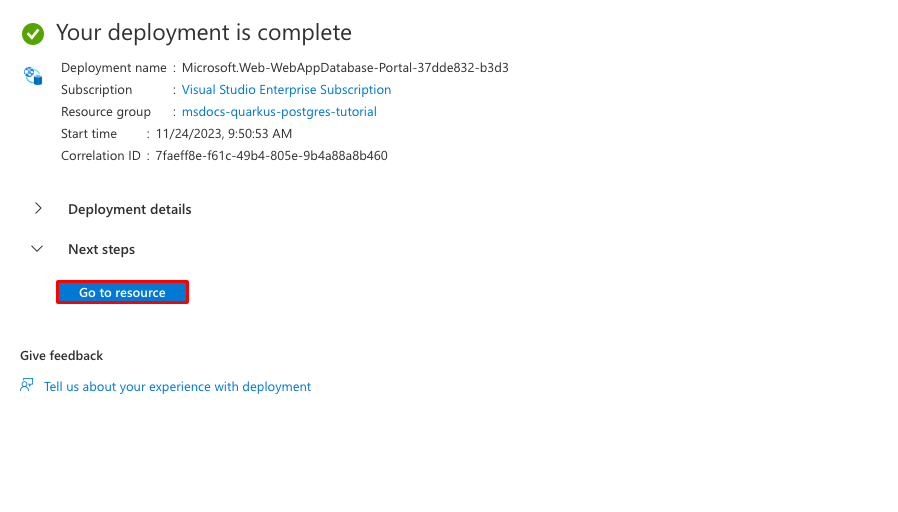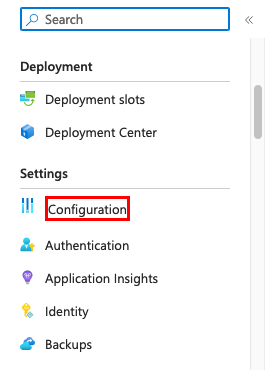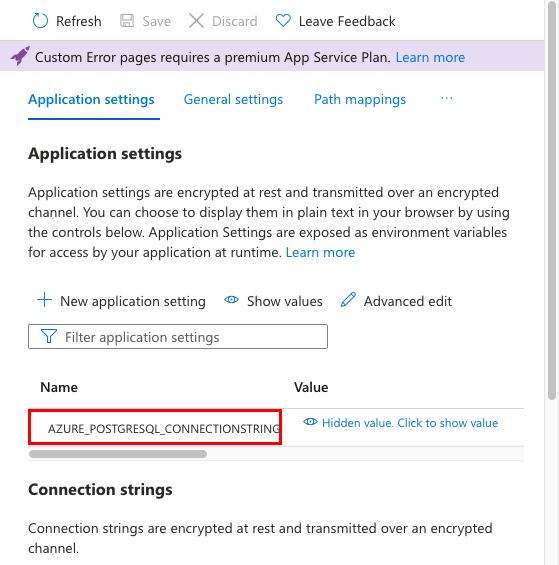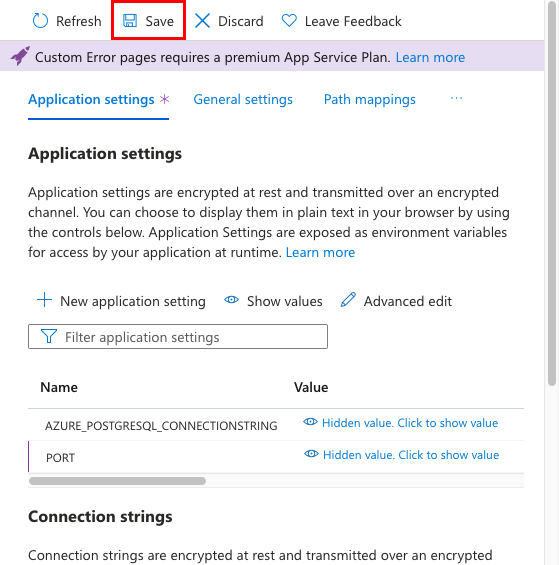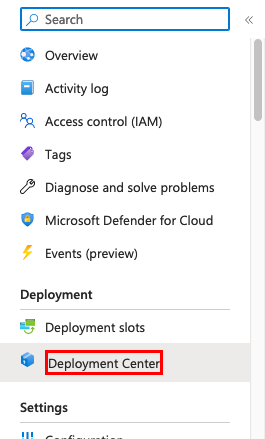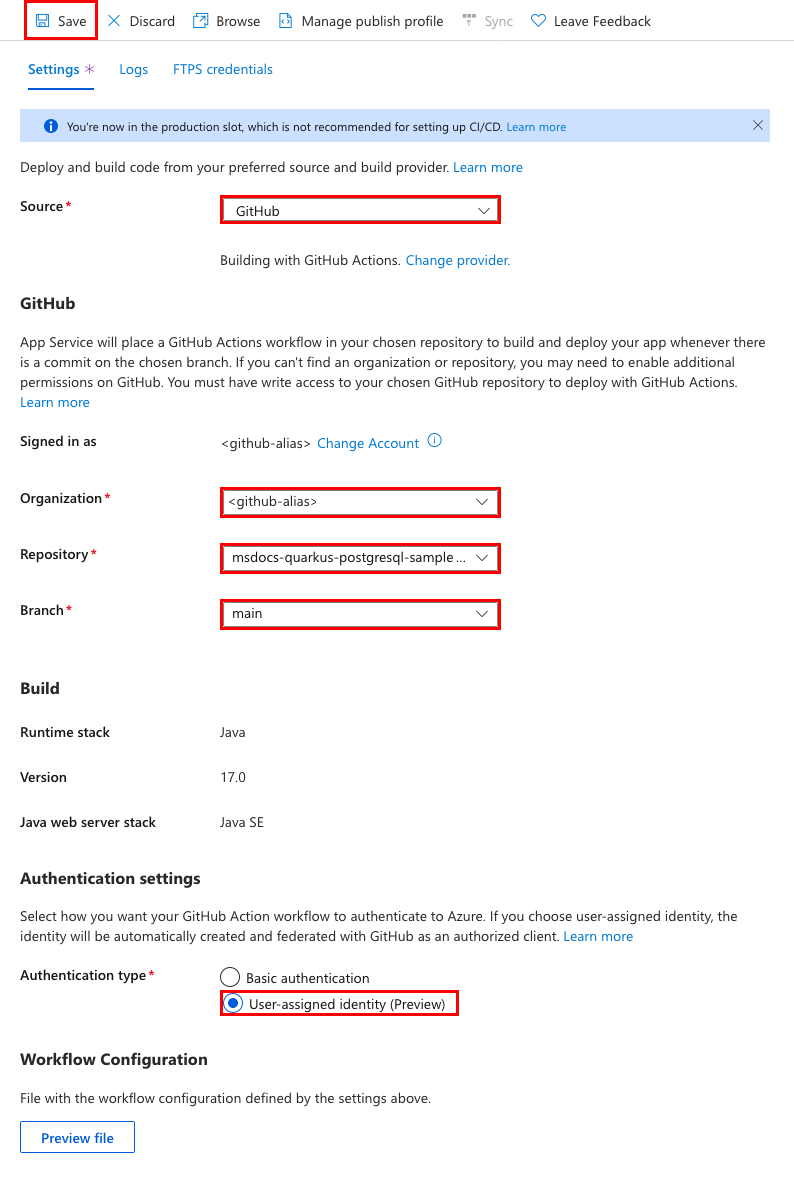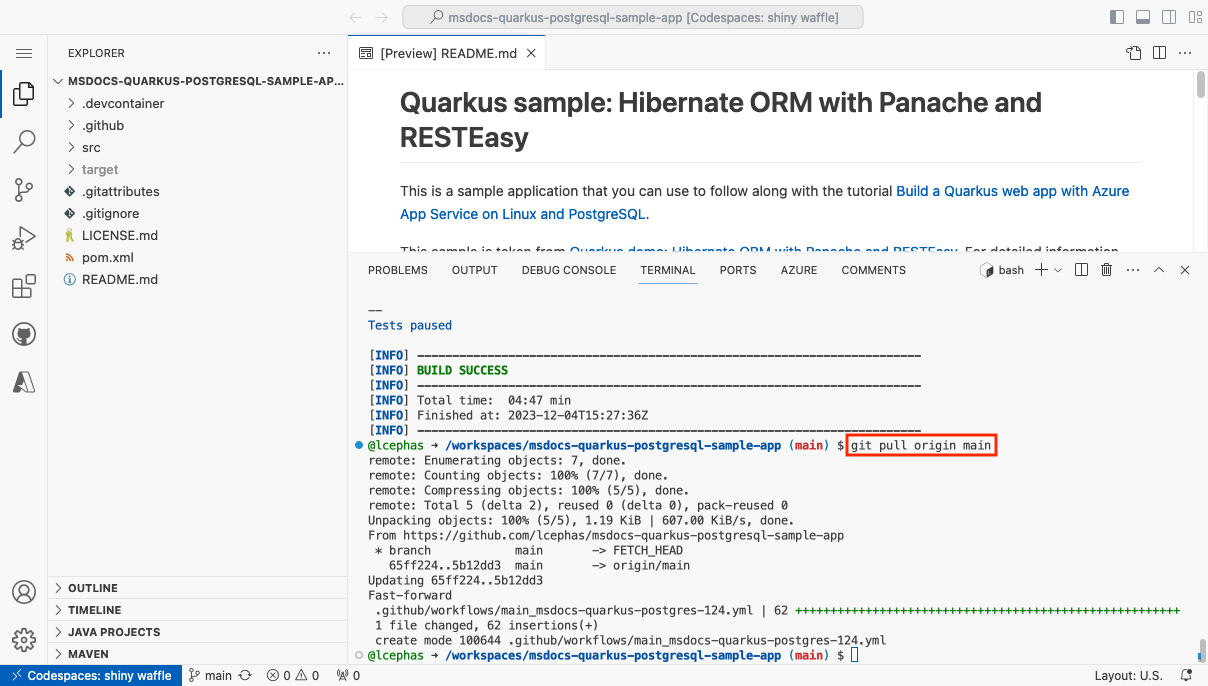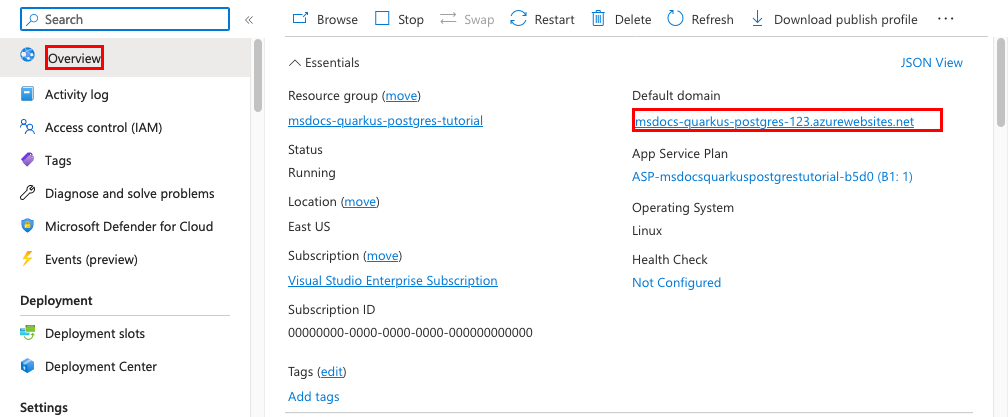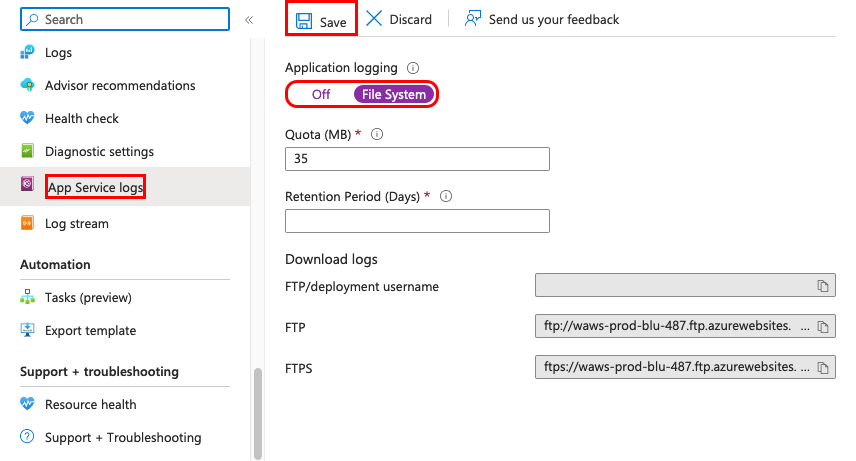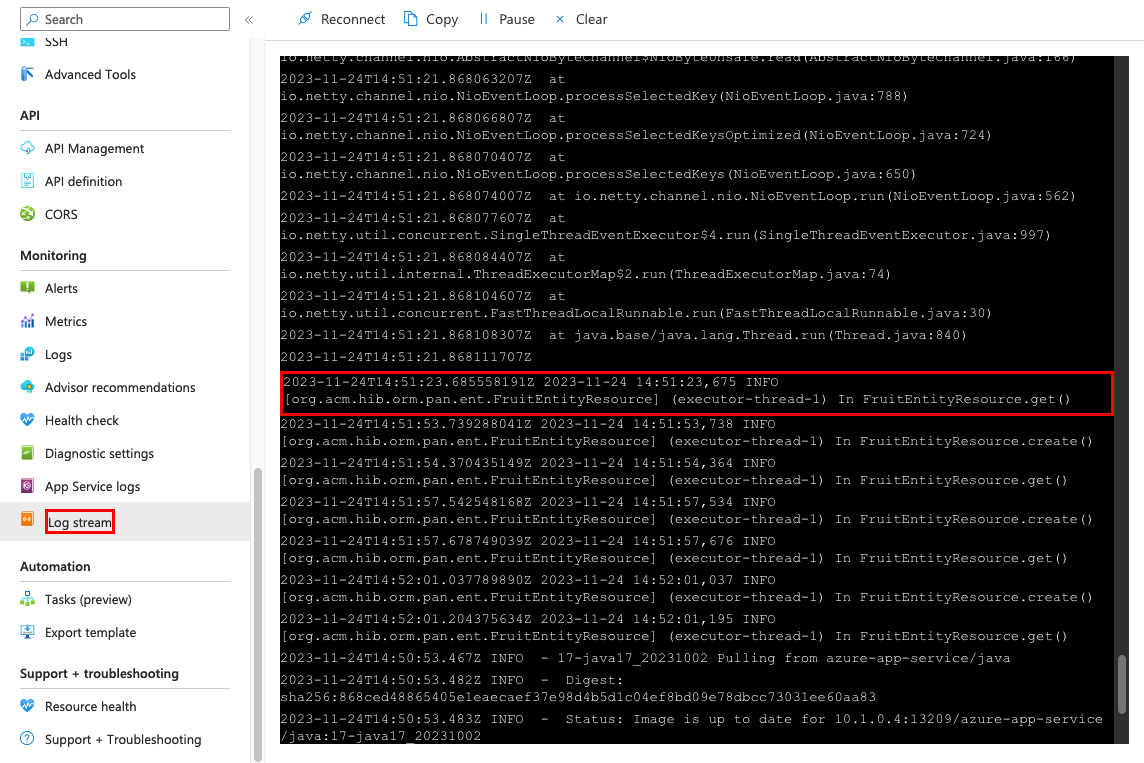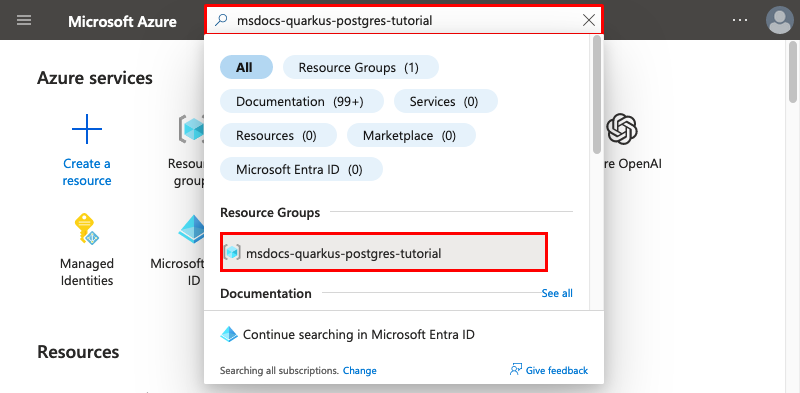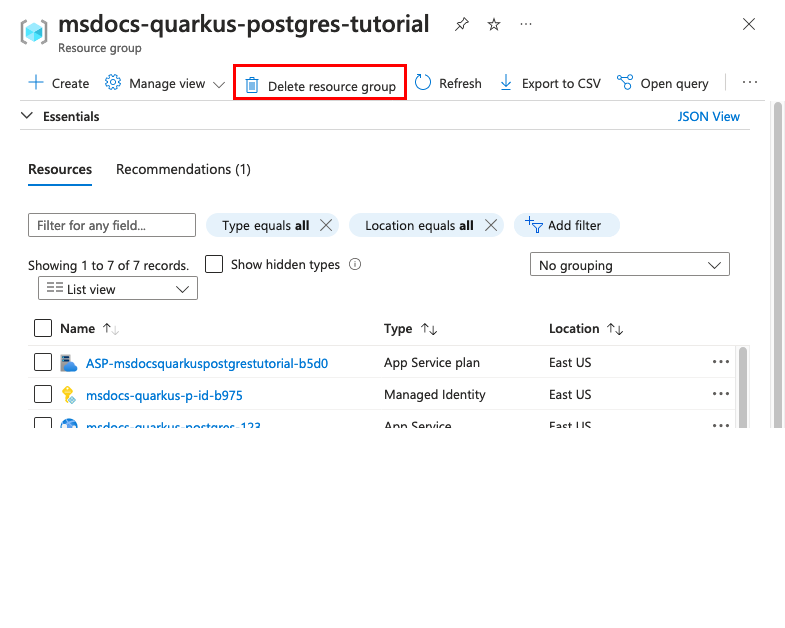Note
Access to this page requires authorization. You can try signing in or changing directories.
Access to this page requires authorization. You can try changing directories.
This tutorial shows how to build, configure, and deploy a secure Quarkus application in Azure App Service that's connected to a PostgreSQL database (using Azure Database for PostgreSQL). Azure App Service is a highly scalable, self-patching, web-hosting service that can easily deploy apps on Windows or Linux. When you're finished, you'll have a Quarkus app running on Azure App Service on Linux.
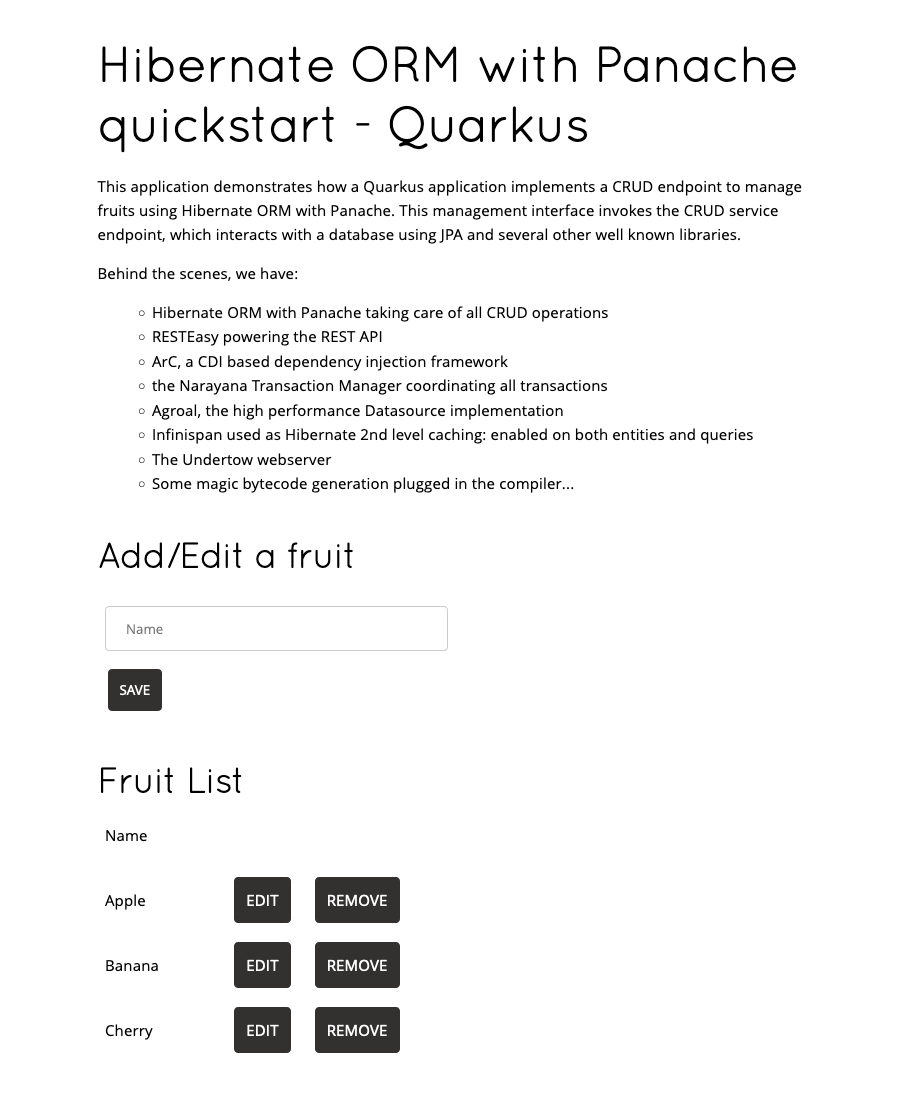
To complete this tutorial, you'll need:
- An Azure account with an active subscription. If you don't have an Azure account, you can create a trial account.
- Knowledge of Java with Quarkus development.
- An Azure account with an active subscription. If you don't have an Azure account, you can create one for free.
- Azure Developer CLI installed. You can follow the steps with the Azure Cloud Shell because it already has Azure Developer CLI installed.
- Knowledge of Java with Tomcat development.
Skip to the end
You can quickly deploy the sample app in this tutorial and see it running in Azure. Just run the following commands in the Azure Cloud Shell, and follow the prompt:
mkdir msdocs-quarkus-postgresql-sample-app
cd msdocs-quarkus-postgresql-sample-app
azd init --template msdocs-quarkus-postgresql-sample-app
azd up
1. Run the sample
First, you set up a sample data-driven app as a starting point. For your convenience, the sample repository, Hibernate ORM with Panache and RESTEasy, includes a dev container configuration. The dev container has everything you need to develop an application, including the database, cache, and all environment variables needed by the sample application. The dev container can run in a GitHub codespace, which means you can run the sample on any computer with a web browser.
Step 1: In a new browser window:
- Sign in to your GitHub account.
- Navigate to https://github.com/Azure-Samples/msdocs-quarkus-postgresql-sample-app/fork.
- Unselect Copy the main branch only. You want all the branches.
- Select Create fork.
Step 2: In the GitHub fork:
- Select main > starter-no-infra for the starter branch. This branch contains just the sample project and no Azure-related files or configuration.
- Select Code > Create codespace on main. The codespace takes a few minutes to set up.
Step 3: In the codespace terminal:
- Run
mvn quarkus:dev. - When you see the notification
Your application running on port 8080 is available., select Open in Browser. If you see a notification with port 5005, skip it. You should see the sample application in a new browser tab. To stop the Quarkus development server, typeCtrl+C.
For more information on how the Quarkus sample application is created, see Quarkus documentation Simplified Hibernate ORM with Panache and Configure data sources in Quarkus.
Having issues? Check the Troubleshooting section.
2. Create App Service and PostgreSQL
First, you create the Azure resources. The steps used in this tutorial create a set of secure-by-default resources that include App Service and Azure Database for PostgreSQL. For the creation process, you'll specify:
- The Name for the web app. It's the name used as part of the DNS name for your webapp in the form of
https://<app-name>.chinacloudsites.cn. - The Region to run the app physically in the world.
- The Runtime stack for the app. It's where you select the version of Java to use for your app.
- The Hosting plan for the app. It's the pricing tier that includes the set of features and scaling capacity for your app.
- The Resource Group for the app. A resource group lets you group (in a logical container) all the Azure resources needed for the application.
Sign in to the Azure portal and follow these steps to create your Azure App Service resources.
Step 1: In the Azure portal:
- Enter "web app database" in the search bar at the top of the Azure portal.
- Select the item labeled Web App + Database under the Marketplace heading. You can also navigate to the creation wizard directly.
Step 2: In the Create Web App + Database page, fill out the form as follows.
- Resource Group: Select Create new and use a name of msdocs-quarkus-postgres-tutorial.
- Region: Any Azure region near you.
- Name: msdocs-quarkus-postgres-XYZ where XYZ is any three random characters. This name must be unique across Azure.
- Runtime stack: Java 17.
- Java web server stack: Java SE (Embedded Web Server).
- Database: PostgreSQL - Flexible Server. The server name and database name are set by default to appropriate values.
- Hosting plan: Basic. When you're ready, you can scale up to a production pricing tier later.
- Select Review + create.
- After validation completes, select Create.
Step 3: The deployment takes a few minutes to complete. Once deployment completes, select the Go to resource button. You're taken directly to the App Service app, but the following resources are created:
- Resource group: The container for all the created resources.
- App Service plan: Defines the compute resources for App Service. A Linux plan in the Basic tier is created.
- App Service: Represents your app and runs in the App Service plan.
- Virtual network: Integrated with the App Service app and isolates back-end network traffic.
- Azure Database for PostgreSQL flexible server: Accessible only from within the virtual network. A database and a user are created for you on the server.
- Private DNS zone: Enables DNS resolution of the PostgreSQL server in the virtual network.
Having issues? Check the Troubleshooting section.
3. Verify connection settings
The creation wizard generated the connectivity variables for you already as app settings. In this step, you learn where to find the app settings, and how you can create your own.
App settings are one way to keep connection secrets out of your code repository. When you're ready to move your secrets to a more secure location, you can use Key Vault references instead.
Step 1: In the App Service page, in the left menu, select Environment variables.
Step 2: In the App settings tab of the Environment variables page, verify that AZURE_POSTGRESQL_CONNECTIONSTRING is present. It's injected at runtime as an environment variable.
Step 4: Select Add application setting. Name the setting PORT and set its value to 8080, which is the default port of the Quarkus application. Select Apply.
Step 5: Select Apply, then select Confirm.
Having issues? Check the Troubleshooting section.
4. Deploy sample code
In this step, you'll configure GitHub deployment using GitHub Actions. It's just one of many ways to deploy to App Service, but also a great way to have continuous integration in your deployment process. By default, every git push to your GitHub repository will kick off the build and deploy action.
Note the following:
- Your deployed Java package must be an Uber-Jar.
- For simplicity of the tutorial, you'll disable tests during the deployment process. The GitHub Actions runners don't have access to the PostgreSQL database in Azure, so any integration tests that require database access will fail, such as is the case with the Quarkus sample application.
Step 1: Back in the App Service page, in the left menu, select Deployment Center.
Step 2: In the Deployment Center page:
- In Source, select GitHub. By default, GitHub Actions is selected as the build provider.
- Sign in to your GitHub account and follow the prompt to authorize Azure.
- In Organization, select your account.
- In Repository, select msdocs-quarkus-postgresql-sample-app.
- In Branch, select starter-no-infra.
- In Authentication type, select User-assigned identity (Preview).
- In the top menu, select Save. App Service commits a workflow file into the chosen GitHub repository, in the
.github/workflowsdirectory.
Step 3: Back in the GitHub codespace of your sample fork, run git pull origin starter-no-infra.
This pulls the newly committed workflow file into your codespace.
Step 4:
- Open src/main/resources/application.properties in the explorer. Quarkus uses this file to load Java properties.
- Find the commented code (lines 10-11) and uncomment it.
This code sets the production variable
%prod.quarkus.datasource.jdbc.urlto the app setting that the creation wizard for you. Thequarkus.package.typeis set to build an Uber-Jar, which you need to run in App Service.
Step 5:
- Open .github/workflows/main_msdocs-quarkus-postgres-XYZ.yml in the explorer. This file was created by the App Service create wizard.
- Under the
Build with Mavenstep, change the Maven command tomvn clean install -DskipTests.-DskipTestsskips the tests in your Quarkus project, to avoid the GitHub workflow failing prematurely.
Step 6:
- Select the Source Control extension.
- In the textbox, type a commit message like
Configure DB and deployment workflow. - Select Commit, then confirm with Yes.
- Select Sync changes 1, then confirm with OK.
Step 7: Back in the Deployment Center page in the Azure portal:
- Select Logs. A new deployment run is already started from your committed changes.
- In the log item for the deployment run, select the Build/Deploy Logs entry with the latest timestamp.
Step 8: You're taken to your GitHub repository and see that the GitHub action is running. The workflow file defines two separate stages, build and deploy. Wait for the GitHub run to show a status of Complete. It takes about 5 minutes.
Having issues? Check the Troubleshooting section.
5. Browse to the app
Step 1: In the App Service page:
- From the left menu, select Overview.
- Select the URL of your app. You can also navigate directly to
https://<app-name>.chinacloudsites.cn.
Step 2: Add a few fruits to the list. Congratulations, you're running a web app in Azure App Service, with secure connectivity to Azure Database for PostgreSQL.
6. Stream diagnostic logs
Azure App Service captures all messages output to the console to help you diagnose issues with your application. The sample application includes standard JBoss logging statements to demonstrate this capability as shown below.
private static final Logger LOGGER = Logger.getLogger(FruitEntityResource.class.getName());
@GET
public List<FruitEntity> get() {
LOGGER.info("In FruitEntityResource.get()");
return FruitEntity.listAll(Sort.by("name"));
}
Step 1: In the App Service page:
- From the left menu, select App Service logs.
- Under Application logging, select File System.
- In the top menu, select Save.
Step 2: From the left menu, select Log stream. You see the logs for your app, including platform logs and logs from inside the container.
Learn more about logging in Java apps in the series on Enable Azure Monitor OpenTelemetry for .NET, Node.js, Python and Java applications.
7. Clean up resources
When you're finished, you can delete all of the resources from your Azure subscription by deleting the resource group.
Step 1: In the search bar at the top of the Azure portal:
- Enter the resource group name.
- Select the resource group.
Step 2: In the resource group page, select Delete resource group.
Step 3:
- Confirm your deletion by typing the resource group name.
- Select Delete.
- Confirm with Delete again.
2. Create Azure resources and deploy a sample app
In this step, you create the Azure resources and deploy a sample app to App Service on Linux. The steps used in this tutorial create a set of secure-by-default resources that include App Service and Azure Database for PostgreSQL.
The dev container already has the Azure Developer CLI (AZD).
From the repository root, run
azd init.azd init --template javase-app-service-postgresql-infraWhen prompted, give the following answers:
Question Answer Continue initializing an app in '<your-directory>'? Y What would you like to do with these files? Keep my existing files unchanged Enter a new environment name Type a unique name. The AZD template uses this name as part of the DNS name of your web app in Azure ( <app-name>.chinacloudsites.cn). Alphanumeric characters and hyphens are allowed.Sign into Azure by running the
azd auth logincommand and following the prompt:azd auth loginCreate the necessary Azure resources and deploy the app code with the
azd upcommand. Follow the prompt to select the desired subscription and location for the Azure resources.azd upThe
azd upcommand takes about 15 minutes to complete (the Redis cache take the most time). It also compiles and deploys your application code, but you'll modify your code later to work with App Service. While it's running, the command provides messages about the provisioning and deployment process, including a link to the deployment in Azure. When it finishes, the command also displays a link to the deploy application.This AZD template contains files (azure.yaml and the infra directory) that generate a secure-by-default architecture with the following Azure resources:
- Resource group: The container for all the created resources.
- App Service plan: Defines the compute resources for App Service. A Linux plan in the B1 tier is created.
- App Service: Represents your app and runs in the App Service plan.
- Virtual network: Integrated with the App Service app and isolates back-end network traffic.
- Azure Database for PostgreSQL flexible server: Accessible only from behind its private endpoint. A database is created for you on the server.
- Azure Cache for Redis: Accessible only from within the virtual network.
- Private DNS zones: Enable DNS resolution of the database server and the Redis cache in the virtual network.
- Log Analytics workspace: Acts as the target container for your app to ship its logs, where you can also query the logs.
- Key vault: Used to keep your database password the same when you redeploy with AZD.
Having issues? Check the Troubleshooting section.
3. Verify connection strings
The AZD template you use generated the connectivity variables for you already as app settings and outputs the them to the terminal for your convenience. App settings are one way to keep connection secrets out of your code repository.
In the AZD output, find the app setting
AZURE_POSTGRESQL_CONNECTIONSTRING. To keep secrets safe, only the setting names are displayed. They look like this in the AZD output:App Service app has the following connection strings: - AZURE_POSTGRESQL_CONNECTIONSTRING - AZURE_REDIS_CONNECTIONSTRINGAZURE_POSTGRESQL_CONNECTIONSTRINGcontains the connection string to the PostgreSQL database in Azure. You need to use it in your code later.For your convenience, the AZD template shows you the direct link to the app's app settings page. Find the link and open it in a new browser tab. Later, you will add an app setting using AZD instead of in the portal.
Having issues? Check the Troubleshooting section.
4. Modify sample code and redeploy
Back in the GitHub codespace of your sample fork, open infra/resources.bicep.
Find the
appSettingsresource and comment the propertyPORT: '8080'. When you're done, yourappSettingsresource should look like the following code:resource appSettings 'config' = { name: 'appsettings' properties: { PORT: '8080' } }From the explorer, open src/main/resources/application.properties.
Find the commented code (lines 10-11) and uncomment it.
%prod.quarkus.datasource.jdbc.url=${AZURE_POSTGRESQL_CONNECTIONSTRING} quarkus.package.type=uber-jarThis code sets the production variable
%prod.quarkus.datasource.jdbc.urlto the app setting that the creation wizard for you. Thequarkus.package.typeis set to build an Uber-Jar, which you need to run in App Service.Back in the codespace terminal, run
azd up.azd upTip
azd upactually doesazd package,azd provision, andazd deploy.azd provisionlets you update the Azure changes you made in infra/resources.bicep.azd deployuploads the built Jar file.To find out how the Jar file is packaged, you can run
azd package --debugby itself.
Having issues? Check the Troubleshooting section.
5. Browse to the app
In the AZD output, find the URL of your app and navigate to it in the browser. The URL looks like this in the AZD output:
Deploying services (azd deploy) (✓) Done: Deploying service web - Endpoint: https://<app-name>.chinacloudsites.cn/
Add a few fruits to the list.
Congratulations, you're running a web app in Azure App Service, with secure connectivity to Azure Database for PostgreSQL.
Having issues? Check the Troubleshooting section.
6. Stream diagnostic logs
Azure App Service can capture console logs to help you diagnose issues with your application. For convenience, the AZD template already enabled logging to the local file system and is shipping the logs to a Log Analytics workspace.
The sample application includes standard JBoss logging statements to demonstrate this capability as shown below.
private static final Logger LOGGER = Logger.getLogger(FruitEntityResource.class.getName());
@GET
public List<FruitEntity> get() {
LOGGER.info("In FruitEntityResource.get()");
return FruitEntity.listAll(Sort.by("name"));
}
In the AZD output, find the link to stream App Service logs and navigate to it in the browser. The link looks like this in the AZD output:
Stream App Service logs at: https://portal.azure.cn/#@/resource/subscriptions/<subscription-guid>/resourceGroups/<group-name>/providers/Microsoft.Web/sites/<app-name>/logStream
Learn more about logging in Java apps in the series on Enable Azure Monitor OpenTelemetry for .NET, Node.js, Python and Java applications.
Having issues? Check the Troubleshooting section.
7. Clean up resources
To delete all Azure resources in the current deployment environment, run azd down and follow the prompts.
azd down
Troubleshooting
I see the error log "ERROR [org.acm.hib.orm.pan.ent.FruitEntityResource] (vert.x-eventloop-thread-0) Failed to handle request: jakarta.ws.rs.NotFoundException: HTTP 404 Not Found".
This is a Vert.x error (see Quarkus Reactive Architecture), indicating that the client requested an unknown path. This error happens on every app startup because App Service verifies that the app starts by sending a GET request to /robots933456.txt.
The app failed to start and shows the following error in log: "Model classes are defined for the default persistence unit <default> but configured datasource <default> not found: the default EntityManagerFactory will not be created."
This Quarkus error is most likely because the app can't connect to the Azure database. Make sure that the app setting AZURE_POSTGRESQL_CONNECTIONSTRING hasn't been changed, and that application.properties is using the app setting properly.
Frequently asked questions
- How much does this setup cost?
- How do I connect to the PostgreSQL server that's secured behind the virtual network with other tools?
- How does local app development work with GitHub Actions?
- What if I want to run tests with PostgreSQL during the GitHub workflow?
How much does this setup cost?
Pricing for the created resources is as follows:
- The App Service plan is created in Basic tier and can be scaled up or down. See App Service pricing.
- The PostgreSQL flexible server is created in the lowest burstable tier Standard_B1ms, with the minimum storage size, which can be scaled up or down. See Azure Database for PostgreSQL pricing.
- The virtual network doesn't incur a charge unless you configure extra functionality, such as peering. See Azure Virtual Network pricing.
- The private DNS zone incurs a small charge. See Azure DNS pricing.
How do I connect to the PostgreSQL server that's secured behind the virtual network with other tools?
- For basic access from a command-line tool, you can run
psqlfrom the app's SSH terminal. - To connect from a desktop tool, your machine must be within the virtual network. For example, it could be an Azure VM in one of the subnets, or a machine in an on-premises network that has a site-to-site VPN connection with the Azure virtual network.
How does local app development work with GitHub Actions?
Using the autogenerated workflow file from App Service as an example, each git push kicks off a new build and deployment run. From a local clone of the GitHub repository, you make the desired updates and push to GitHub. For example:
git add .
git commit -m "<some-message>"
git push origin main
What if I want to run tests with PostgreSQL during the GitHub workflow?
The default Quarkus sample application includes tests with database connectivity. To avoid connection errors, you added the -skipTests property. If you want, you can run the tests against a PostgreSQL service container. For example, in the automatically generated workflow file in your GitHub fork (.github/workflows/main_cephalin-quarkus.yml), make the following changes:
Add YAML code for the PostgreSQL container to the
buildjob, as shown in the following snippet.... jobs: build: runs-on: ubuntu-latest # BEGIN CODE ADDITION container: ubuntu services: # Hostname for the PostgreSQL container postgresdb: image: postgres env: POSTGRES_PASSWORD: postgres POSTGRES_USER: postgres POSTGRES_DB: postgres # Set health checks to wait until postgres has started options: >- --health-cmd pg_isready --health-interval 10s --health-timeout 5s --health-retries 5 # END CODE ADDITION steps: - uses: actions/checkout@v4 ...container: ubuntutells GitHub to run thebuildjob in a container. This way, the connection string in your dev environmentjdbc:postgresql://postgresdb:5432/postgrescan work as-is in when the workflow runs. For more information about PostgreSQL connectivity in GitHub Actions, see Creating PostgreSQL service containers.In the
Build with Mavenstep, remove-DskipTests. For example:- name: Build with Maven run: mvn clean install
Next steps
Learn more about running Java apps on App Service in the developer guide.
Learn how to secure your app with a custom domain and certificate.



